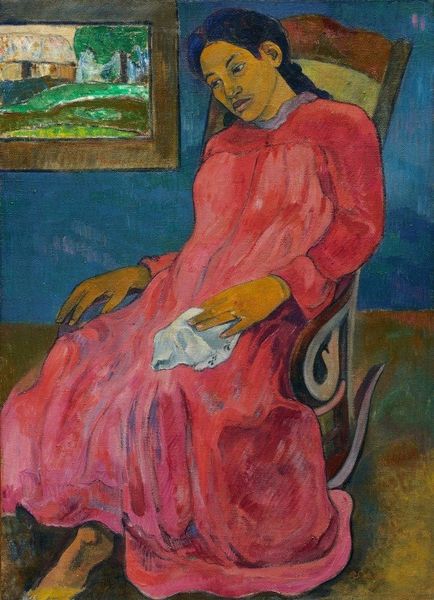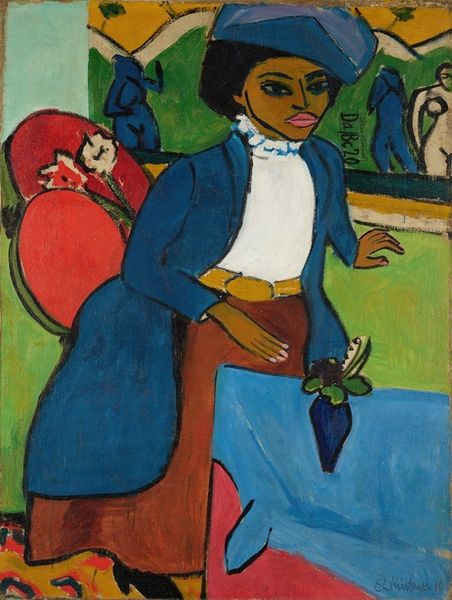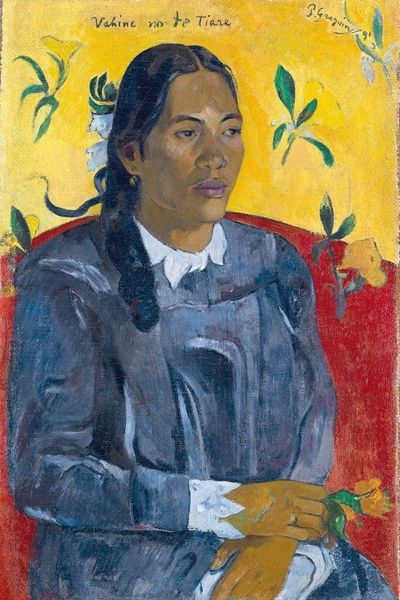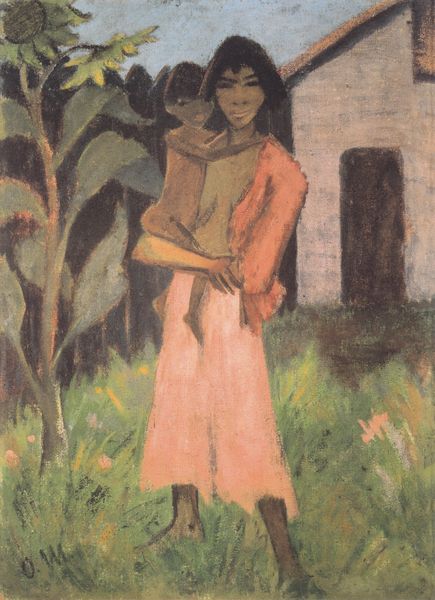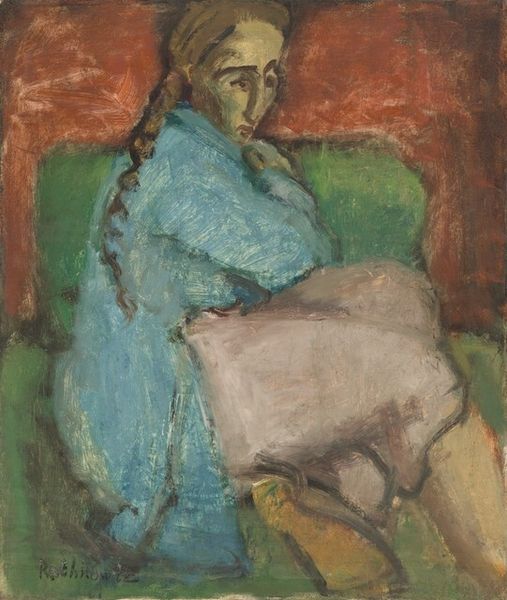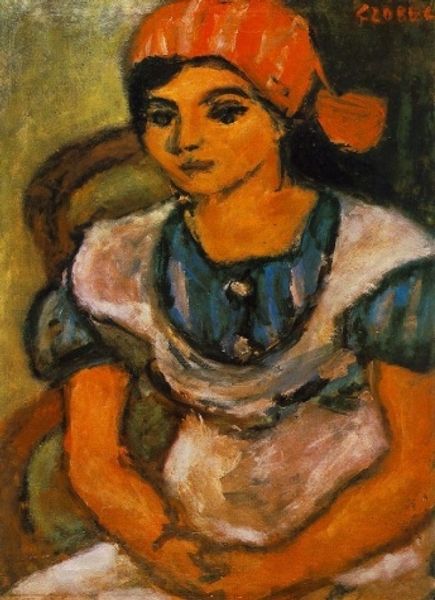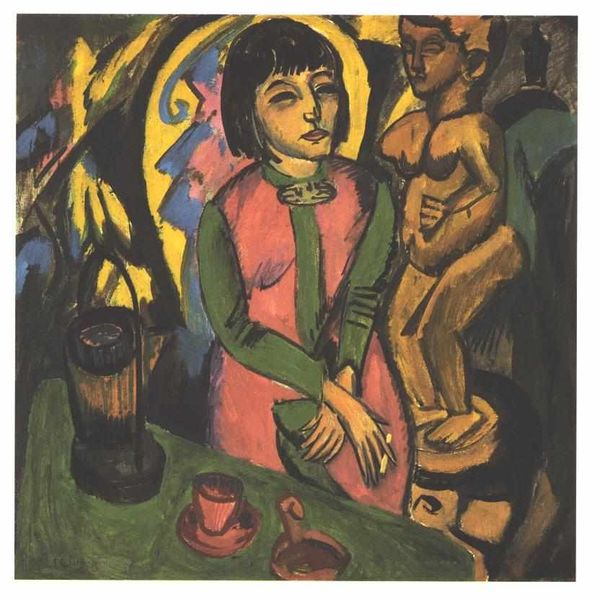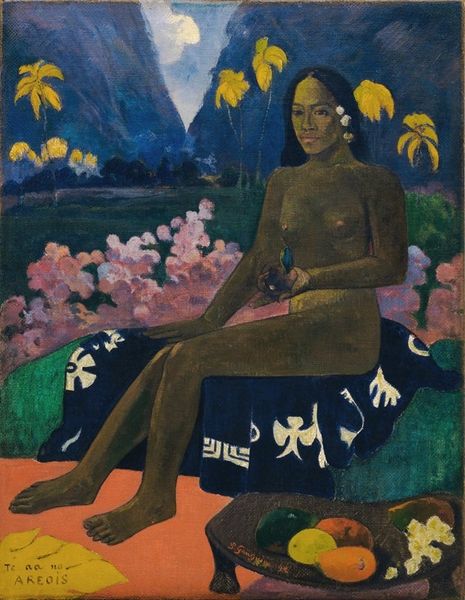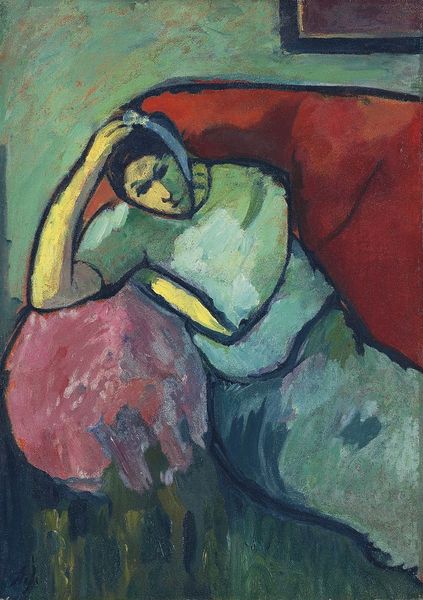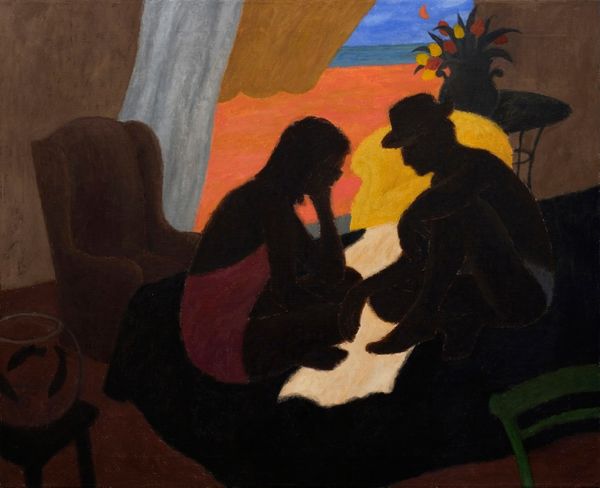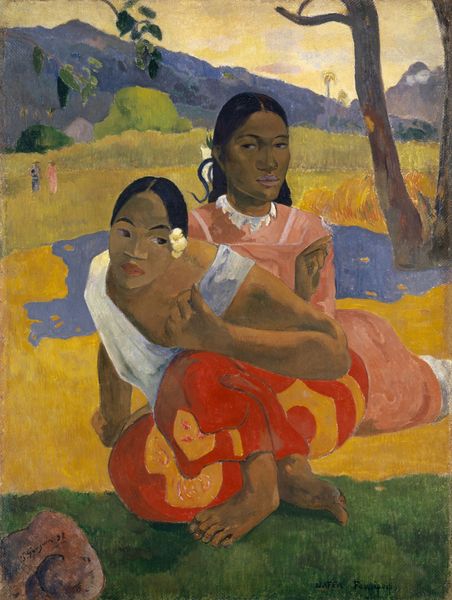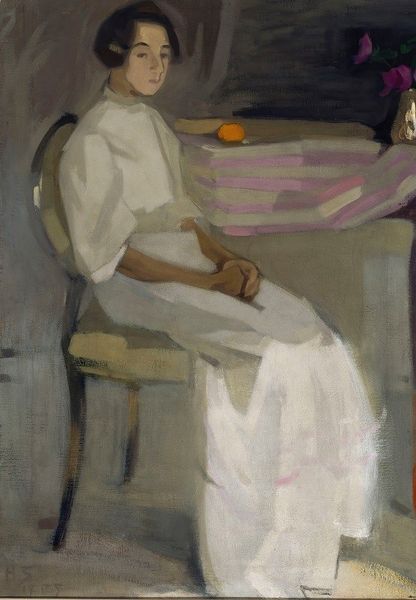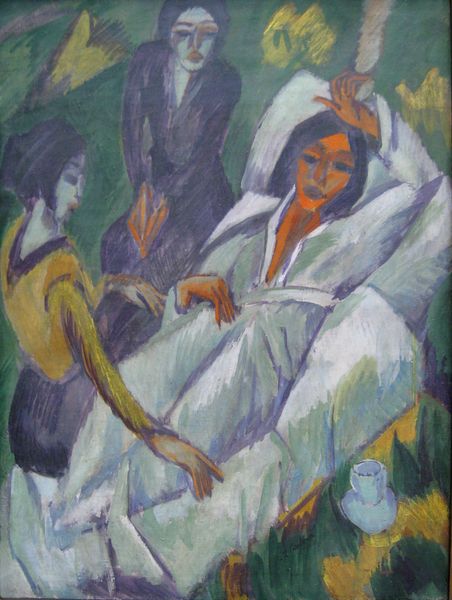
Copyright: Public Domain: Artvee
Editor: So, here we have Paul Gauguin’s "Woman with Mango" from 1892, an oil painting. There’s a real sense of quiet contemplation to it. She seems very self-possessed. What do you see in this piece? Curator: I'm drawn to how Gauguin uses the mango itself as a symbol. Consider the fruit – ripe, luscious. It's an offering, yes, but to whom? The viewer? Perhaps more broadly, it speaks to an invitation into this constructed "paradise" he presents. Does it strike you as a genuine depiction, or something more symbolic, a romanticized idea of Tahiti? Editor: I think there's definitely a sense of romanticization. The colours are so vibrant, almost heightened. Is the mango also connected to her identity as a Tahitian woman? Curator: Precisely. The mango and the vibrant colours are definitely tied to his perception of Polynesian identity. Food and flora become part of his symbolic language for representing the exotic. Look at how the dress, despite its European cut, is a solid field of culturally resonant purple. Consider its meaning. The interplay between indigenous iconography and Gauguin's vision creates tension. Editor: Tension between reality and fantasy, maybe? It’s almost as if the fruit itself is another jewel within the painting itself. Curator: I see your point! Just like jewellery, right? So, consider the gaze she gives, just off the viewer. It’s a cultural exchange, where she presents both an item of beauty and a presentation of self. Editor: So, it's about more than just a woman and a fruit. It’s Gauguin exploring cultural identity through symbolism. Thanks, I hadn’t thought about the fruit as anything more than, well, a fruit! Curator: Indeed. By seeing symbols we understand Gauguin invites a dialogue. A complex narrative involving personal yearning, the cultural Other, and of course, mangoes!
Comments
No comments
Be the first to comment and join the conversation on the ultimate creative platform.
